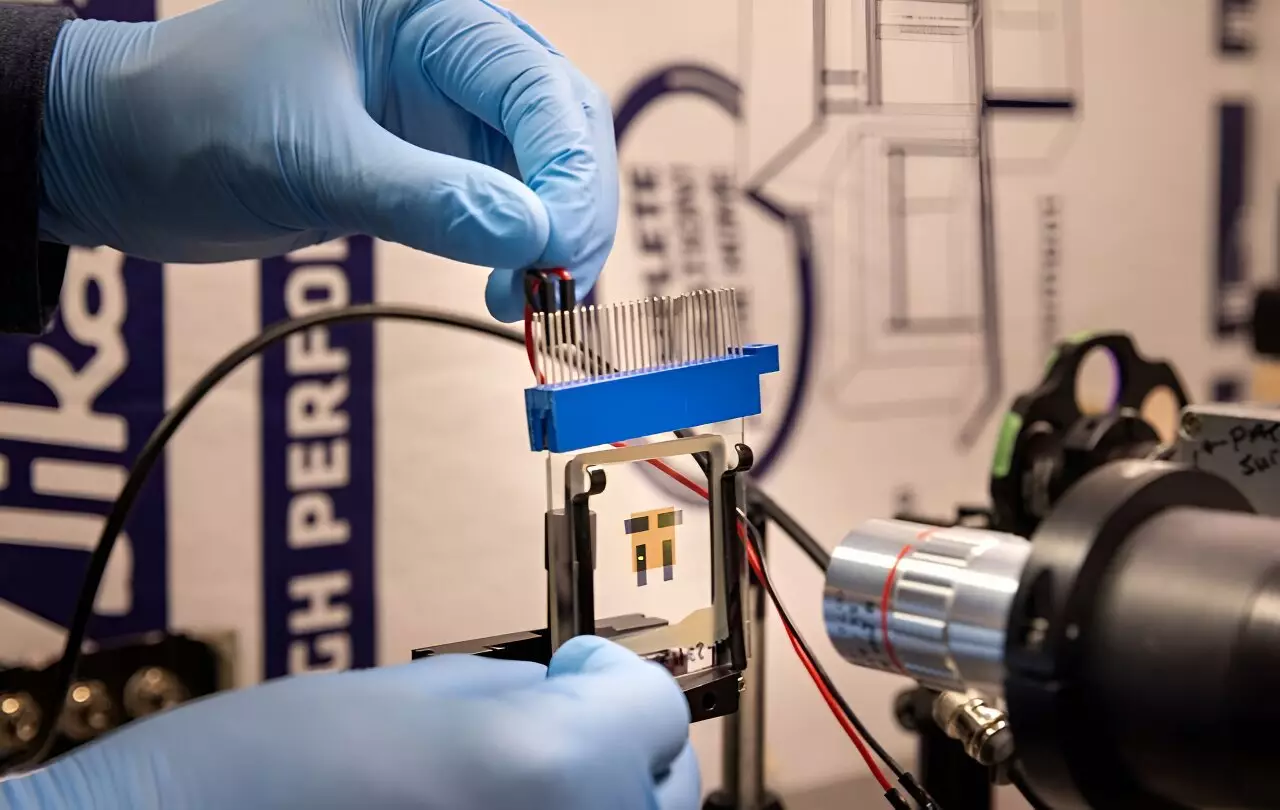Recent research out of the University of Michigan has presented a groundbreaking solution that could transform night vision technology. The study, published in the reputable journal Nature Photonics, highlights a novel form of organic light-emitting diode (OLED) that replaces traditional bulky night vision goggles with sleek and lightweight glasses. These advancements not only promise to make night vision more affordable but also enhance practicality for users engaged in extended outdoor activities. This article delves into the implications of the findings, the mechanics behind this innovative device, and the potential future applications that extend beyond just night vision.
To grasp the significance of this new OLED technology, it’s essential to understand the limitations of current night vision systems. Most traditional systems rely on image intensifiers that perform a complex process: they convert near-infrared light into electrons, which are then amplified through a vacuum chamber to produce visible light. This method is notorious for not only being bulky but also for requiring high voltage and immense energy consumption. Although the technology effectively amplifies light—up to about 10,000 times—its cumbersome nature limits portability and usability in various environments. Thus, there is a significant demand for more user-friendly alternatives.
The researchers at the University of Michigan have pioneered a new OLED that innovatively converts near-infrared light into visible light with an amplification of over 100 times. This remarkable feat is achieved without the heavy-duty requirements of traditional image intensifiers, such as the vacuum layer and high voltage. Chris Giebink, a professor of electrical and computer engineering at U-M, underscores the device’s compact design, noting that the entire OLED stack is less than one micron thick—far thinner than a human hair. This slimming down of design not only reduces bulk but also enhances comfort for prolonged wear.
Importantly, the development of this OLED technology introduces a feedback mechanism unknown in previous models. For every electron that traverses the OLED stack, up to five photons can potentially be emitted, further amplifying light output. This represents a breakthrough capability that could redefine expectations for night vision performance.
One of the standout features of this new OLED device is its significantly lower power requirements. By operating at reduced voltage compared to traditional systems, the OLED promises to minimize energy consumption, which could be a game-changer in applications where battery life is crucial. This enhancement means that users can engage longer without worrying about their devices losing power, thus increasing the practical usability of night vision technology in various settings, be it military operations, wildlife observation, or nighttime navigation.
An intriguing aspect of this new OLED is its memory behavior, known as hysteresis. Unlike standard devices, which cease output immediately after illumination is turned off, the OLED can “remember” previous light intensities and durations. This capability opens the door to novel applications in computer vision technology, allowing for image processing that mimics biological systems, such as human sight. The implications are vast; there is potential for creating smart devices that can interpret visual data in real time without needing a separate computing unit, potentially revolutionizing fields that rely on immediate visual processing.
The construction of this OLED utilizes readily available materials and established manufacturing techniques, which brings two significant advantages: cost-effectiveness and ease of scalability. This feature suggests that mass production of the advanced OLED could soon be a reality, enhancing accessibility for consumers. As the technology matures, it promises not just improvements in night vision systems, but could also extend its innovative capabilities to various sectors, including security, augmented reality, and beyond.
The research coming from the University of Michigan signifies a major leap forward for vision technologies. The new OLED scheme not only reduces bulk but also enhances efficiency and intelligence in processing visual data. With advances in photon gain and memory behavior, we are standing on the precipice of a new age in night vision technology and beyond. As we move toward further exploration in this field, the potential ramifications for industries relying on visual technology are both exciting and far-reaching. The promise of lightweight, efficient night vision solutions has the capacity to empower users, redefine standard practices, and pave the way for further technological innovations.


Leave a Reply